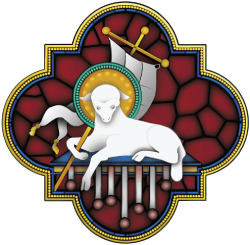Dr. Rowan Williams, who served as the 104th Archbishop of Canterbury, has come to the defense of priests who are the target of an online petition by wedding photographers.
“Church Leaders: We come in PEACE,” the petition on change.org begins. “This is a huge issue across the wedding photography industry and it’s one which continues to be a problem, en masse. Not all church leaders are problematic, but a LOT are — and those that are problematic are not only hindering professional video/photographers from doing the job they’ve been paid to do, they’re more often than not rude, humiliating, aggressive and abusive.”
The petition’s title describes the cause as “Improve working conditions for wedding video/photographers in churches,” but the petition does not stipulate what body should make the changes it seeks. The petition attracted 974 signatures by March 7, and many supporters are photographers who tell of their hurt or humiliation while trying to do their jobs.
Photographer Rachel Lambert said a vicar in South Wales had “grabbed me by the arm, dragged me backward down the aisle, and told me to stand outside. He told me NOT to take any photographs at all during the ceremony until instructed to, during the signing.”
Anesa Broad wrote: “It’s been years and I still carry the mental trauma of being pushed off an [altar] by a priest growling at me to stay out of his way. I was visibly pregnant and this was in front of the whole congregation before the ceremony had even started.”
Asked for his perspective by The Sunday Times, Williams granted that some priests can be “a complete pain” about wedding photography, but he also strived to help readers understand church priorities.
“A request not to be intrusive during a service when something significant is supposed to be taking place at the spiritual level is not unreasonable,” Williams said. “The event isn’t staged just as a spectacle to be filmed, but as a personal encounter of a couple with God.”
Sunday Times reporter Phoebe Luckhurst provided context for how some couples treat their weddings.
“Long gone are the days when photographers were expected to get a few nice pictures for the relatives’ mantelpieces — now they must capture every second of the day, and get the money shot for a couple’s social media ‘moment.’ Some newlyweds now drip-feed wedding photographs on to Instagram over several weeks, like a fashion brand teasing a new ad campaign,” Luckhurst wrote.
The Rev. Dr. Giles Fraser, a longtime journalist and broadcaster, was solidly on the side of his fellow clergy.
Photographers “don’t appreciate that a sacred space is often structured around graduations of holiness; that certain bits of the church are dedicated to specific liturgical functions,” Fraser wrote in his regular column for UnHerd. “Taking cameras into the sanctuary, for instance, disturbs the sense that the couple is entering into something holy. The Hebrew word for holy is kodesh, which means to be set apart, and it is this setting apart that lies at the heart of a service of holy matrimony. In the sacred sanctuary, with the priest, the couple make their vows to almighty God — but someone ambling in with a camera undermines this moment completely.”
Clashes between photographers and priests are so common that some priests have as many horror stories as photographers do.
Fraser added: “So when the photographer turns up 10 minutes before the service and tells me how it’s going to be, that this is how the bride wants it, it makes little difference. They will stay behind the pillar and take photographs from the back, and not follow the bride down the aisle as if this were some catwalk show. They hate it, of course. But you don’t just walk into the house of God and expect the place to bend to your needs. The fact that this space is different, reflects different values, is precisely why people choose to be married here.”




